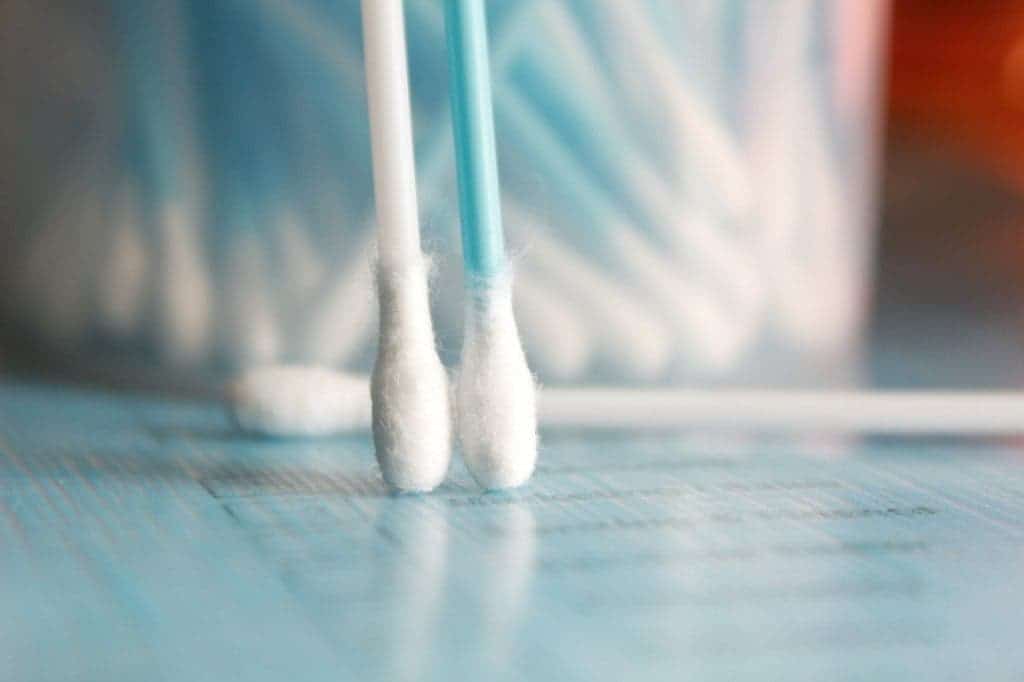
‘Don’t put anything smaller than your elbow in your ears,’ said mom. Mom’s a smart woman, representatives from the American Academy of Otolaryngology—Head and Neck Surgery Foundation (AAOHNF) would say. The foundation recently published a new set of guidelines for how people should clean their ears and for the gazillionth time they’ve reiterated that you should stay away from inserting Q-tips, pen caps, paper clips or even pinky fingers inside your ear.
There’s this false impression that ear wax is a sign of uncleanliness, that it’s dirty somehow. By using cotton swabs or some other kind of ‘creative’ objects to pull out the wax, some people think they’re doing their ears a favor. Doctors, however, stress that this is wrong and, most often than not, makes things worse. In fact, in many cases, using Q-tips actually creates problems where there were none to begin with.
“This update is significant because it not only provides best practices for clinicians in managing cerumen impaction, it is a strong reminder to patients that ear health starts with them, and there are many things they should do as well as many things that they should stop doing immediately to prevent damage to their ears,” said Seth R. Schwartz, MD, MPH, chair of the guideline update group.
Ear wax or cerumen is a natural product of our bodies, like sweat and tears. It’s produced by tiny glands nested inside the ear canal and its role is to protect the outer ear from dust and other impurities. The cerumen also acts as an antifungal and antibacterial substance. In other words, ear wax is very important to your ear’s health — far from being a sign of uncleanliness.
Not all people produce the same amount of wax, as it varies from individual to individual. When there’s too little ear wax, the ear canal becomes dry, itchy and prone to infection. If an excessive amount of ear wax is produced, it can build-up deep in the ear canal affecting the hearing quality and the optimal operation of hearing aids. Wax build-up can also lead to aching, pressure or dizziness.
[ALSO SEE] How we hear and other eary functions
Excessive ear wax is called impacted cerumen and it affects 1 in 10 children, 1 in 20 adults, and more than one-third of the geriatric. According to these statistics, you stand at low risk of developing wax build-up in your ears and hence do not require cleaning the inside of your ear. If you’re not sure, check for the symptoms above.
For most people, old wax is naturally discarded as it dries and forms a crust or as skin grows. A lot of people, however, get impacted cerumen after they decide it’s a good idea to stick things inside the ear.
“Patients often think that they are preventing earwax from building up by cleaning out their ears with cotton swabs, paper clips, ear candles, or any number of unimaginable things that people put in their ears. The problem is that this effort to eliminate earwax is only creating further issues because the earwax is just getting pushed down and impacted further into the ear canal,” Dr. Schwartz said. “Anything that fits in the ear could cause serious harm to the ear drum and canal with the potential for temporary or even permanent damage.”
Doctors say that cotton swabs are meant only to clean the creases of the outer ear and should not be put inside the ear canal. If your ears are genuinely blocked by wax, a solution is to pour a few drops of mineral oil, baby oil or glycerin in the ear. The recommendation, however, is to visit a doctor who has the training and special tools to irrigate and flush out the ears.
Here are the most important guidelines from the new AAOHNF update:
- DON’T overclean your ears. Excessive cleaning may irritate the ear canal, cause infection, and even increase the changes of cerumen impaction.
- DON’T put anything smaller than your elbow in your ear. Cotton swabs, hair pins, care keys, toothpicks…these can all injure your ear and may cause a laceration (cut) in the ear canal, a perforation (hole) in the eardrum, and/or dislocation of the hearing bones, leading to hearing loss, dizziness, ringing, and other symptoms of ear injury.
- DON’T use ear candles. There is no evidence that they remove impacted cerumen, and candling can cause serious damage to the ear canal and eardrum.
- DO seek medical evaluation if you have symptoms of hearing loss, ear fullness, and ear pain if you are not certain that they are from cerumen.
- DO ask your provider about ways that you can treat your cerumen impaction at home. You may have certain medical or ear conditions that may make some options unsafe.
- DO seek medical attention with ear pain, drainage, or bleeding. These are not symptoms of cerumen impaction and need further evaluation.


